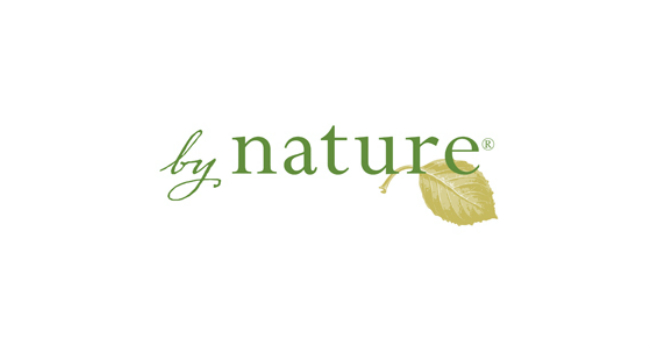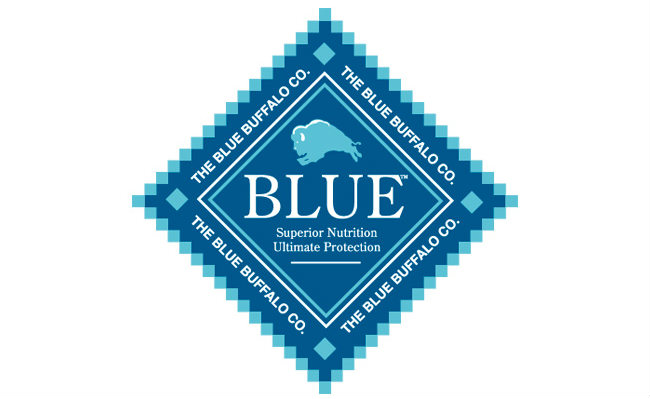Finding the perfect pet food formula for your cat can be a tricky affair. Most pet food companies claim to offer the best formulas, but the foods rarely live up to the marketing hype. The By Nature cat food brand is one of the many brands in the market today. This is a pet food brand manufactured by the By Nature Company and they are under the Blue Seal Feeds Company umbrella.
Blue Seal Feeds is an animal feed company that has been in existence for more than 130 years. Initially, it was a horse feed manufacturing company before it expanded its market to producing foods for other animals. Currently, By Nature cat formulas are manufactured at one of the nine manufacturing plants under Blue Seal. The Londonderry, New Hampshire plant is responsible for producing the By Nature cat food brand.
One product under the By Nature brand is the Trout Stew Canned Cat Food formula. According to the manufacturing company, this is a natural cat formula made with natural ingredients.
Ingredients in By Nature Trout Stew Cat Food
Trout, Fish Broth, Vegetable Broth, Chicken Liver, Egg, Natural Flavor, Pea Flour, Flaxseed, Guar Gum, Calcium Carbonate, Salt, Spinach, Dill, Sodium Tripolyphosphate, Alfalfa Meal, Cranberries, Zucchini, Potassium Chloride, Zinc Proteinate, Taurine, Dicalcium Phosphate, Iron Proteinate, Magnesium, Manganese Proteinate, Sodium Selenite, Copper Proteinate, Thiamine Mononitrate (Vitamin B1), Niacin Supplement (Vitamin B3), Calcium Iodate, d-Calcium Pantothenate (Vitamin B5), Pyridoxine Hydrochloride (Vitamin B6), Vitamin E Supplement, Riboflavin Supplement (Vitamin B2), Vitamin B12 Supplement, Biotin (Vitamin B7), Menadione Sodium Bisulfite Complex, Vitamin D2 Supplement, Folic Acid (Vitamin B9).
All ingredients used to make this cat formula have been formulated to meet the AAFCO pet formula nutritional requirements.
Top 5 Ingredients Analysis
The main ingredients in any pet formula are the first five on the ingredients list. These ingredients make up most of the nutritional value in the formula. You can tell the proportion of any ingredient contained in the formula by looking at how high or low it is listed in the ingredients list. Prior to cooking, each ingredient is weighed. Then, the ingredients are listed in order of the heaviest to the lightest ingredients.
Trout – Fish ingredients have become much more common in dog food over the years and now, this ingredient has found its way into cat food. While fish is not the typical prey for cats in the wild, they do supply a healthy amount of protein and extremely beneficial fatty acids as well as other nutrients cats can benefit from. Some cat owners worry about the mercury level that naturally occurs in fish, but the FDA continues to state that the mercury levels in fish are safe for both humans and pets. There is also some concern about where this ingredient might be sourced from. If the fish contains ethoxyquin, this is definitely something you would not want to feed to your cat, but we are unable to verify whether this ingredient contains ethoxyquin or not. Also, most of the time, fish used in pet food is the fish that has been deemed unfit for human consumption for whatever reason. Nonetheless, this ingredient does provide a fairly high amount of healthy nutritional benefit.
Fish broth – Fish broth is a mostly non-nutritious ingredient used to add moisture to the food. It is considered a better alternative to plain water and does provide an enhanced taste for cats. We do wish this broth came from a named fish source as the broth could have been made using almost any type of fish and almost any part of the fish. However, this is still considered a safe ingredient and we aren’t too concerned about the unnamed source this broth comes from.
Vegetable broth – Broth is used to add flavor and moisture to the food, but in this case, the broth comes from an unnamed source. We usually like to see a named broth source like chicken broth or vegetable broth, but since this ingredient is unnamed, we are left guessing. While it is unlikely this ingredient is harmful to your cat, we would much rather see a named broth source here.
Chicken liver – Here is another ingredient you probably wouldn’t want to see on your own dinner plate, but most cats seem to enjoy the taste of liver. Uncooked liver, or liver in very high quantities, can actually be toxic to cats. However, in this food, it is clearly provided well within safe limits. In fact, this ingredient is a pretty high quality ingredient overall. It provides a good source of vitamins, minerals, proteins, and other nutrients your cat can benefit from.
Egg – While raw eggs can cause some skin problems in cats, cooked eggs are healthy for cats and supply quite a bit of protein. Some cat owners prefer only feeding egg whites because the yolks can add a fairly high amount of cholesterol. In addition to the protein content, eggs also supply potassium, magnesium, calcium, phosphorus, copper, zinc, and iron. In moderation, this is considered a healthy ingredient for cats.
Additional Ingredients In By Nature Trout Stew Cat Food
Spinach – While it certainly sounds like a healthy ingredient, the truth is, spinach doesn’t add much nutritional value to the food. It does supply some various nutrients and vitamins, but the levels are quite low. Many companies like to include this ingredient as it looks great on the ingredients list, but in general, it is not all that nutritious for cats. On the flip side, there is very little to worry about and this ingredient is considered to be very safe for most cats.
Zucchini – Zucchini is a food that many cats seem to enjoy the taste of. Unfortunately, there will not be many nutritional benefits, if any, from a cat consuming zucchini, but it is a much better alternative than many other flavor enhancers or filler ingredients.
Dill – an aromatic annual herb of the parsley family, with fine blue-green leaves and yellow flowers. The leaves and seeds of dill are used for flavoring and for medicinal purposes. In this case, it is most likely added as a flavor enhancer and will not provide much additional benefit to your cat nutritionally speaking.
Allergy Risk With By Nature Trout Stew Cat Food
This cat food blend does not contain the main allergy causing ingredients found in many other cat foods. There are also no widespread reports of allergy problems associated with this food. All cats are different and you should always be careful when switching cat food blends, but we believe the allergy risk in this food is quite low.
Low Quality Ingredients Commonly Found In Cat Food
Meat by-products – This is about the lowest quality meat product that can be included in any cat food. We are very disappointed to see this ingredient listed. Meat By-Products are parts of slaughtered animals including the lungs, spleen, kidneys, brain, liver, blood, bone, partially defatted low-temperature fatty tissue, and stomach and intestines freed of their contents. In addition, meat by-products can also legally contain animals that were dead, dying, or diseased before slaughtering. Many times, animals with tumors are ground and processed, meaning, ground up cancerous tumors could legally be included in your pets food. While unlikely, it can even legally include road kill. Perhaps worst of all, this ingredient COULD include meat from euthanized cats, dogs, horses, or other animals. Meat by-product is an unnamed meat source and you never know for sure where it is coming from or what animals are being used. Also note that meat by-products are not approved for human consumption. It consists of unwanted parts only acceptable in the pet food or feed industries. This is one of the most controversial meat ingredients that could be included and there is much to be concerned about when purchasing any pet food that includes meat by-products.
Pasta – Chicken is a very popular ingredient for pet food and in this case, they are referring to whole chicken. This is a very high quality meat source and we are pleased to see it listed. In dry cat foods, whole chicken loses about 80% of its content during the cooking process. This is because chicken consists of about 80% moisture. After the cooking process is complete, the amount of whole chicken remaining is substantially reduced. However, in wet cat foods the cooking process is a bit different so this is much less of a concern.
Artificial coloring and flavoring – Both artificial and natural flavor ingredients are considered to be lower quality ingredients. Artificial flavor is usually derived from petroleum. Most have not been studied for safety or toxicity. They are all synthesized chemicals that don’t even have common names. Most artificial flavors actually contain many chemical ingredients, not just one. Many of those chemicals are volatile. Both natural and artificial flavors are chemical based ingredients and we don’t get all that excited when we see either one of those ingredients listed. Both of these ingredients have potential allergy risks and other possible health problems in cats.
We also find it quite irresponsible to include artificial coloring in pet food since the health concerns about these added colors are so controversial. Your cat does not care what color their food is and the only reason artificial coloring is added to this product is for marketing purposes. It makes the food look better to you YOU, the human consumer. Of course, many cat food brands are very defensive about their use of food coloring. Here is an example of how the Purina brand defends their use of fool coloring. Notice how even in their explanation, there is no perceived benefit to these ingredients other than changing the color. There is also a growing amount of evidence to suggest food coloring may be linked to cancer in not just dogs and cats, but also humans. Here is an article that explains a bit further. In short, since there is some controversy surrounding this ingredient, we find it a bit strange that cat food companies would spend money adding this ingredient into a product when at best, it has zero nutritional value for your cat and only has marketing value. At worse, it could pose health risks. It just doesn’t seem like the risk of including this ingredient is worth it.
Fortunately, none of these ingredients are contained in the By Nature Trout Stew Cat Food blend.
Conclusion
Judging by the ingredients used, it is clear that this is nutrient rich cat food. Moreover, it is grain free. The customer reviews also indicate that this is a favorable formula for cats in all life stages. Judging by the ingredients list alone, we have concluded that this cat food is significantly above average quality.




